Eagles are majestic birds of prey that are known for their strength, agility, and impressive wingspans. While there are over 60 species of eagles in the world, some are larger than others.
In this article, we will explore the top 9 largest eagles in the world based on their wingspan, weight, and length. From the extinct Haast’s Eagle to the powerful Harpy Eagle, these birds are truly awe-inspiring.
You are reading: Top 9 Largest Eagles In The World
Whether you’re a bird enthusiast or simply curious about the largest eagles in the world, this article will provide you with all the information you need.
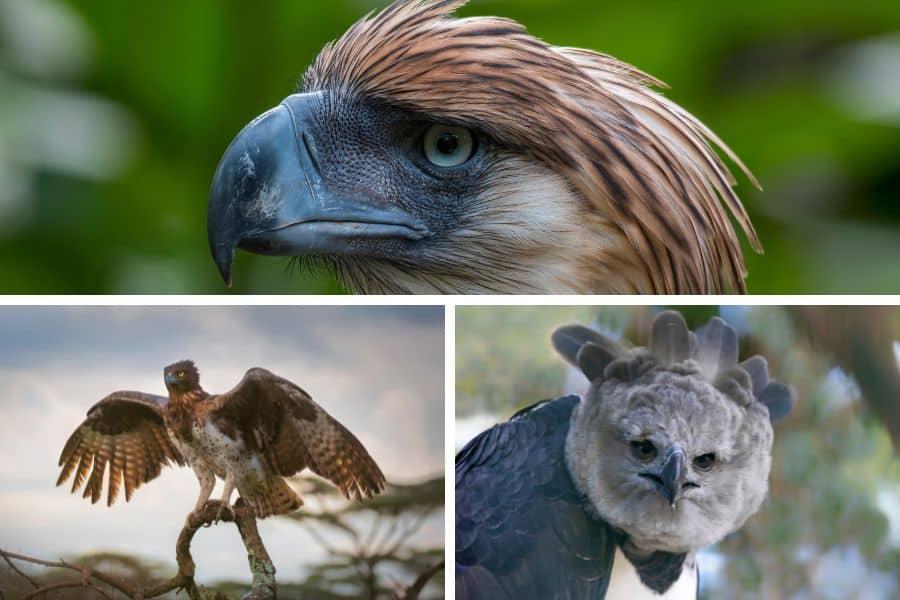
Top 9 Largest Eagles In The World
Haast’s Eagle
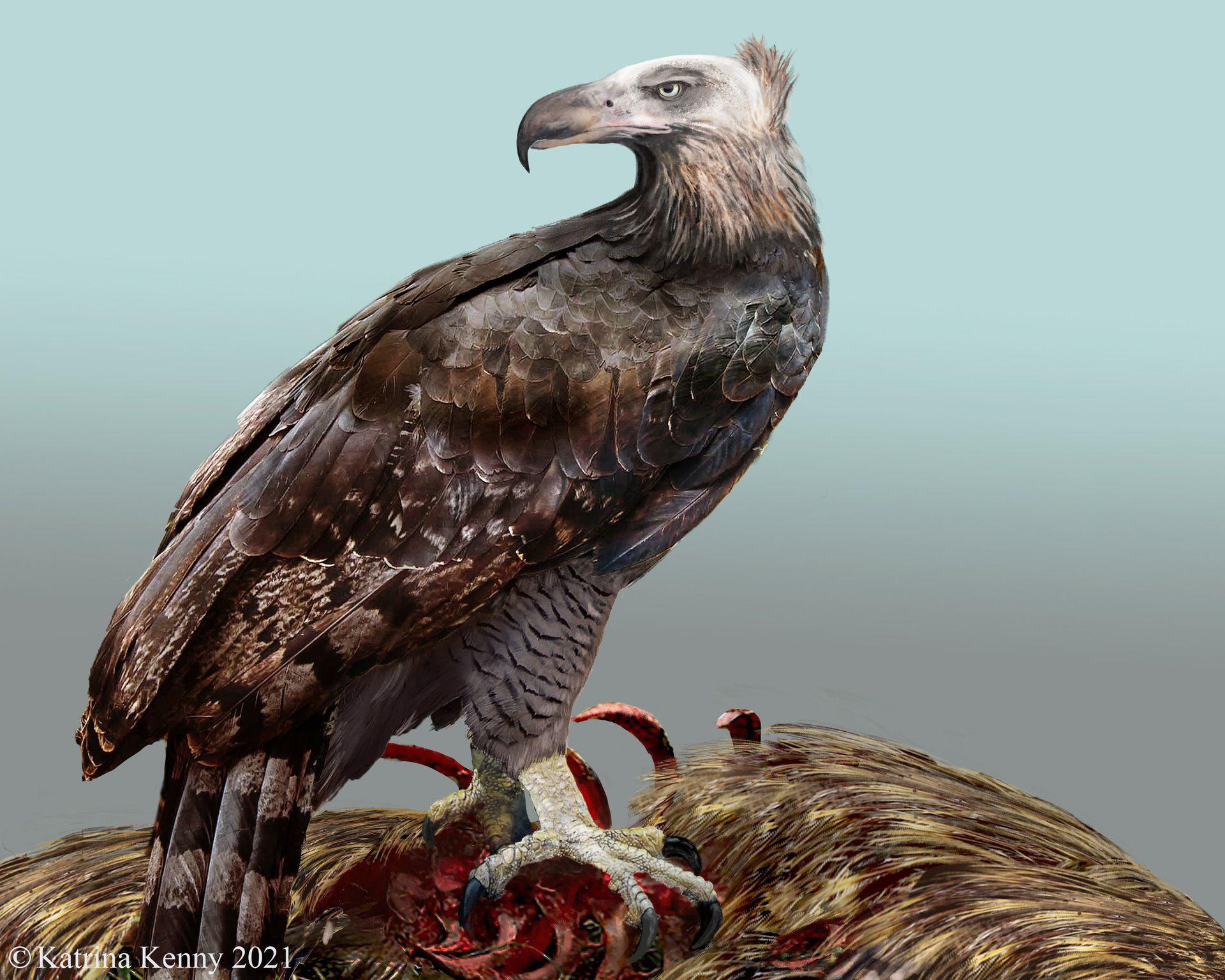
Haast’s Eagle is an extinct species of eagle that lived in the South Island of New Zealand. It was the largest eagle known to have existed, with an estimated weight of 15 kilograms. Its massive size is explained as an evolutionary response to the size of its prey, the flightless moa, the largest of which could weigh 230 kg.
The Haast’s Eagle is also credited as having larger jaws than most modern eagles, as well as possessing several long talons on the feet. With a wingspan of between two and three meters, and weighing up to 13 kilograms, the Haast’s Eagle is the largest eagle ever to have existed in the world.
Female eagles were significantly larger than males, with most estimates placing the female Haast’s eagles in the range of 10–15 kg and males around 9–12 kg. The shape of Haast’s eagle was one of many puzzles that scientists faced as they studied this long-extinct species, preserved in just a few skeletons, plus scattered bits and pieces.
For nearly a century, there was a debate over whether such a large bird could fly; even after that feud was settled, questions remained about whether the bird was capable of killing moa, which in some cases would have been more than 15 times larger than the eagle itself.
Steller’s Sea Eagle

Steller’s Sea Eagle (Haliaeetus pelagicus) is a very large diurnal bird of prey in the family Accipitridae. It is one of the largest eagles in the world, with an average weight of 9 kilograms and a wingspan of up to 8 feet.
The Steller’s Sea Eagle has dark brown plumage with white wings and tail, a yellow beak, and yellow talons. Mature Steller’s Sea Eagles have mostly dark brown to black plumage, with strongly contrasting white on the lesser and median upper-wing coverts, under-wing coverts, thighs, under-tail coverts, and tail. Their diamond-shaped, white tails are relatively long.
The bold, pied coloration of adults may play some part in social hierarchies with other eagles of their own species during the non-breeding season, although this has not been extensively studied. Steller’s Sea Eagles are monogamous and form long-lasting pair bonds.
Courtship usually occurs between February and March and consists of a soaring flight above the breeding area. In 2023, a Steller’s Sea Eagle was spotted in North America, which is a rare occurrence.
Philippine Eagle
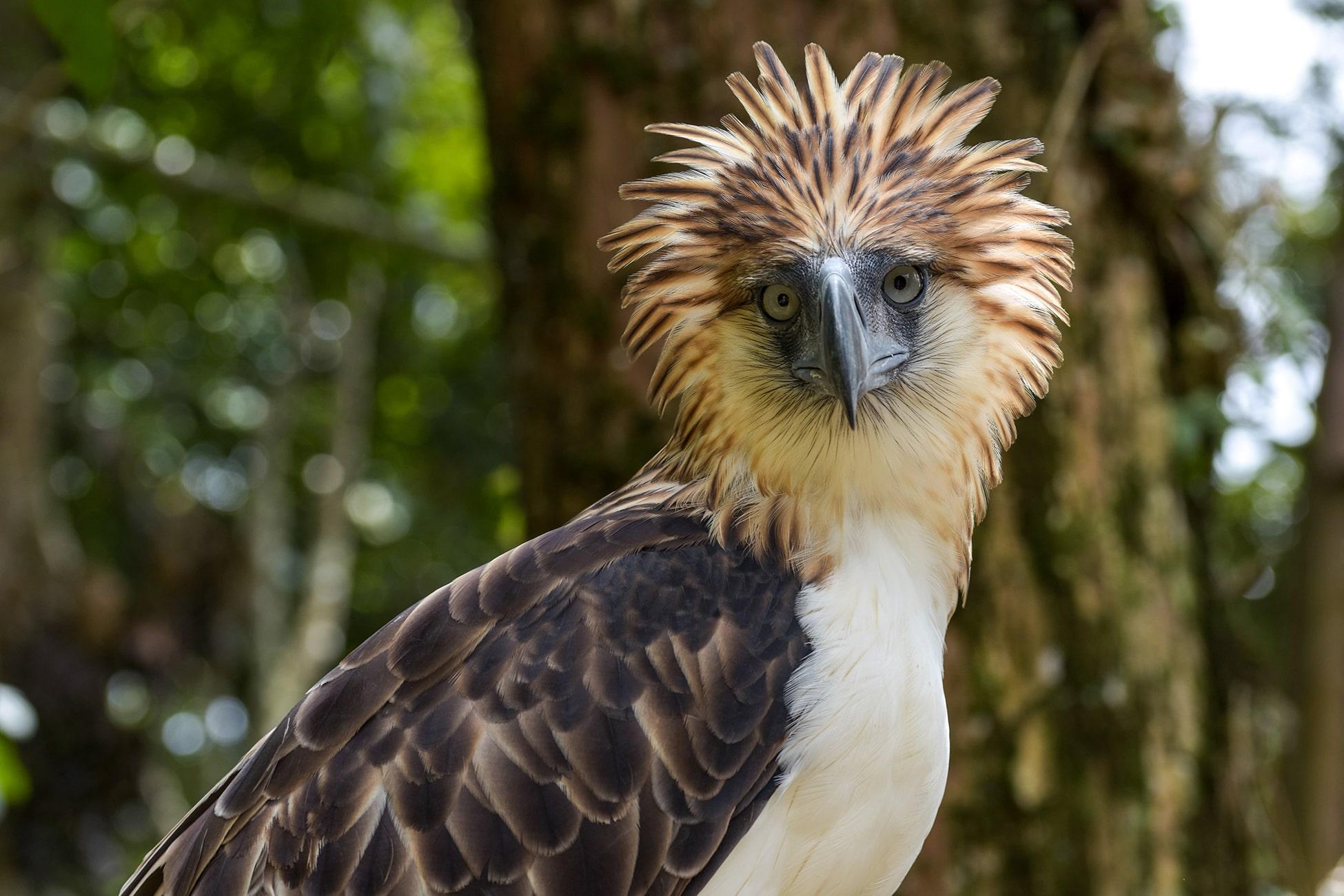
The Philippine Eagle (Pithecophaga jefferyi) is a critically endangered species of eagle that is endemic to forests in the Philippines.
The Philippine Eagle is also known as the monkey-eating eagle or great Philippine eagle. It has brown and white-colored plumage, a shaggy crest, and generally measures 86 to 102 cm (2.82 to 3.35 ft) in length and weighs 4.04 to 8.0 kg (8.9 to 17.6 lb) .
The Philippine Eagle is considered the largest of the extant eagles in the world in terms of length and wing surface area, with only Steller’s sea eagle and the Harpy eagle being larger in terms of weight and bulk. It has been declared the national bird of the Philippines.
The most significant threat to the species is loss of habitat, a result of high levels of deforestation throughout most of its range. At least one Philippine eagle is killed every year because of shooting. As more of their forest is lost, Philippine eagles go farther and farther from their usual hunting grounds in search of prey to hunt. This usually brings them towards human settlements and their livestock, which often results in conflict, with the Philippine eagle on the losing end.
The Philippine Eagle is one of the rarest eagles in the world, with an estimated population of fewer than 500 individuals. The Philippine Eagle was the official mascot for the Southeast Asian Games competition in 2005. Killing a Philippine Eagle is punishable under Philippine law by up to 12 years in prison and heavy fines.
Conservation efforts are being made to save the Philippine Eagle and protect its habitat. These efforts not only benefit the eagles but also bring positive cultural outcomes to many indigenous communities in the Philippines.
Harpy Eagle
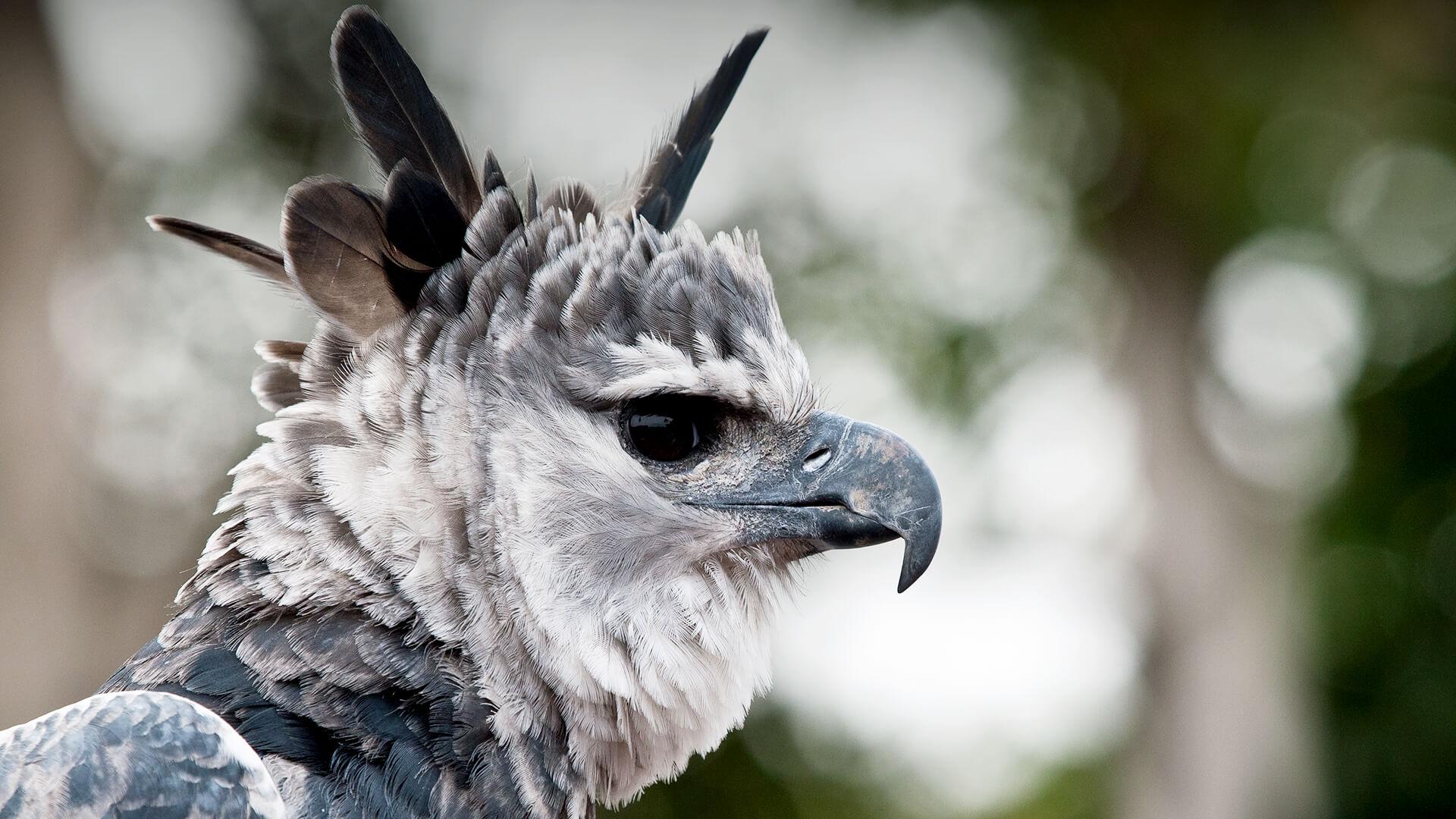
The Harpy Eagle (Harpia harpyja) is a neotropical species of eagle that is also called the American harpy eagle to distinguish it from the Papuan eagle, which is sometimes known as the New Guinea harpy eagle or Papuan harpy eagle.
The Harpy Eagle is the largest and most powerful raptor found throughout its range, and among the largest extant species of eagles in the world. It usually inhabits tropical lowland rainforests in the upper (emergent) canopy layer.
The Harpy Eagle was first described by Carl Linnaeus in his landmark 1758 10th edition of Systema Naturae as Vultur harpyja, after the mythological beast harpy.
Read more : Can Parakeets Eat Cantaloupe?
The Harpy Eagle has dark gray plumage above and paler below, with an obvious dark breast band. The Harpy Eagle’s facial disk feathers can be lowered or lifted at will like an owl. This process helps them direct sound waves to their ears to improve hearing. Its eyesight is 8 times better than humans, and when locked on a potential meal, they fly below the forest canopy and swoop in to catch their prey.
The length of the Harpy Eagle’s rear talons is about 4 to 5 inches, just the same as a grizzly bear’s claws. Those talons give the Harpy enough power and grip to lift prey up to their own weight.
The Harpy Eagle is not only the National Bird of Panama, but it is also the emblem of the Colombian Air Force, the Ecuadorian symbol of biodiversity, and could be found on the Venezuelan 10 bolivares.
The Harpy Eagle is restricted to mature forest and always rare. The Harpy Eagle is considered one of the most powerful and largest raptors globally. The Harpy Eagle is near threatened, and its population is declining due to habitat loss and hunting.
Conservation efforts are being made to save the Harpy Eagle and protect its habitat. These efforts not only benefit the eagles but also bring positive cultural outcomes to many indigenous communities in the Americas.
African Crowned Eagle
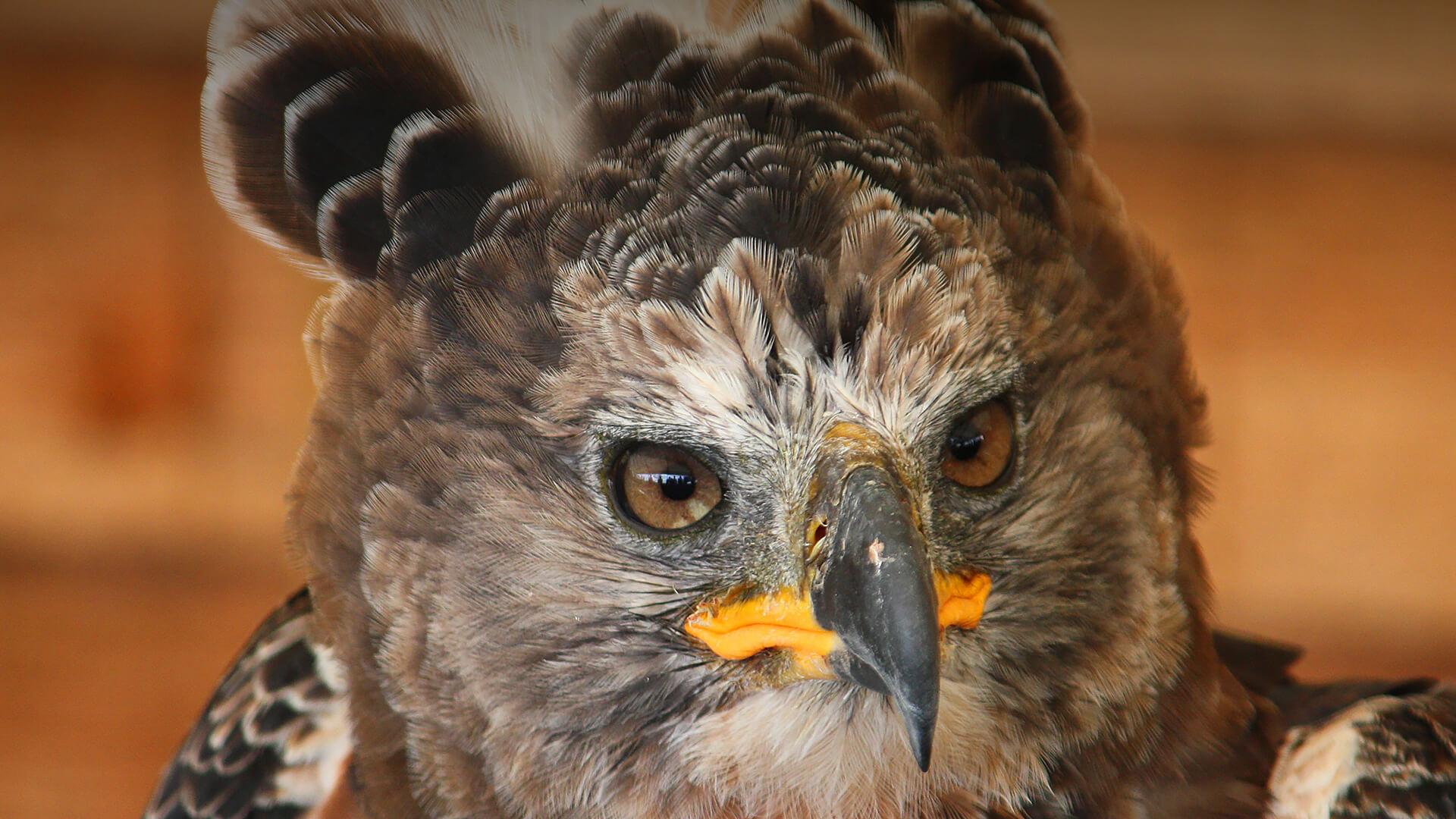
The African Crowned Eagle (Stephanoaetus coronatus) is a large bird of prey found in sub-Saharan Africa, and in Southern Africa, it is restricted to eastern areas.
The African Crowned Eagle is also known as the crowned eagle or the crowned hawk-eagle. Its preferred habitats are principally riparian woodlands and various forests.
The African Crowned Eagle is the only extant member of the genus Stephanoaetus. A second species, the Malagasy crowned eagle (Stephanoaetus mahery), became extinct after humans settled on Madagascar.
Due to their ecological similarities, the African Crowned Eagle is considered to be the African counterpart of the Harpy Eagle (Harpia harpyja).
The African Crowned Eagle has a dark brown head with long crest feathers tipped in white, a cream or reddish breast with black bars, and wings that are black on the upper side and white on the underside. The African Crowned Eagle has thick, strong legs with yellow feet and long black talons.
It is resident in thicker woodland and lowland, montane, and riverine forest, where it hunts monkeys and other small-to-medium-sized vertebrates.The African Crowned Eagle is one of the largest and most powerful eagles in Africa, with a wingspan of up to 2 meters.
The African Crowned Eagle is near threatened, and its population is declining due to habitat loss and hunting.
Conservation efforts are being made to save the African Crowned Eagle and protect its habitat. These efforts not only benefit the eagles but also bring positive cultural outcomes to many indigenous communities in Africa.
Martial Eagle
The Martial Eagle (Polemaetus bellicosus) is a large eagle that is native to sub-Saharan Africa.
The Martial Eagle is the only member of the genus Polemaetus.k It is one of the largest and most powerful species of booted eagle, with a wingspan of up to 7 feet.
The Martial Eagle is heavily built, brown above with black throat and black-spotted white underparts. It has a short, barred tail and bright yellow eyes. The adult is uniformly brown on the head, back, and chest, with a pale belly covered in brown blotches.
The Martial Eagle is a fairly opportunistic predator that varies its prey selection between mammals, birds, and reptiles. It is one of few eagle species known to hunt primarily from a high soar, by stooping on its quarry.
The Martial Eagle is large and strong enough to kill jackals and small antelopes, but its usual food is smaller mammals, birds, and reptiles. The Martial Eagle is genetically unique, falling between two other species in monotypical genera, the African long-crested eagle (Lophaetus occipitalis) and the Asian rufous-bellied eagle (Lophotriorchis kienerii).
The Martial Eagle is near threatened, and its population is declining due to habitat loss and hunting.
Conservation efforts are being made to save the Martial Eagle and protect its habitat. These efforts not only benefit the eagles but also bring positive cultural outcomes to many indigenous communities in Africa.
White-tailed Eagle
The White-tailed Eagle (Haliaeetus albicilla) is a very large species of sea eagle that is widely distributed across temperate Eurasia.
The White-tailed Eagle is also known as the sea eagle. It is a member of the family Accipitridae, which includes other diurnal raptors such as hawks, kites, and harriers.
The White-tailed Eagle is one of up to eleven members in the genus Haliaeetus, which are commonly called sea eagles. It is one of the largest living birds of prey, with a wingspan of up to 2.5 meters.
The White-tailed Eagle has brown body plumage with a conspicuously pale head and neck which can be almost white in older individuals. The White-tailed Eagle is a powerful predator that feeds mainly on fish, but will also take birds and mammals.
Read more : The Top 10 Smallest Birds In North America
The White-tailed Eagle was once widespread throughout Europe, but was heavily persecuted and became extinct in many areas.
Conservation efforts have helped to reintroduce the White-tailed Eagle to some areas where it had disappeared, and its population is now increasing in some parts of Europe.
The White-tailed Eagle is the largest bird of prey in the UK, where it was reintroduced in the 1970s after being extinct for over 50 years.
Conservation efforts are being made to protect the White-tailed Eagle and its habitat. These efforts not only benefit the eagles but also bring positive cultural outcomes to many communities in Europe.
Golden Eagle
The Golden Eagle (Aquila chrysaetos) is a bird of prey that is widely distributed across the Northern Hemisphere.
The Golden Eagle is the most widely distributed species of eagle and one of the best-known birds of prey in the Northern Hemisphere. It is one of the largest birds of prey in North America, with a wingspan of up to 7.5 feet.
The Golden Eagle has dark brown plumage with lighter golden-brown plumage on its nape, and immature eagles of this species typically have white on the tail and often have white markings on the wings.
The Golden Eagle is a powerful predator that feeds mainly on small mammals, birds, and reptiles, but is also capable of killing larger prey such as cranes, wild ungulates, and domestic livestock.
The Golden Eagle is monogamous and forms long-lasting pair bonds. Courtship usually occurs between December and February and consists of a series of aerial displays.
The Golden Eagle is found throughout Eurasia, in northern Africa, and in North America.
The Golden Eagle is the national bird of five countries: Albania, Germany, Austria, Mexico, and Kazakhstan. The Golden Eagle is near threatened, and its population is declining due to habitat loss and hunting.
Conservation efforts are being made to save the Golden Eagle and protect its habitat. These efforts not only benefit the eagles but also bring positive cultural outcomes to many communities in the Northern Hemisphere.
Wedge-tailed Eagle
The Wedge-tailed Eagle (Aquila audax) is a bird of prey that is native to Australia and southern New Guinea.
The Wedge-tailed Eagle is the largest bird of prey in Australia and one of the largest eagles in the world, with a wingspan of up to 2.3 meters. Adults of this species have long, broad wings, fully feathered legs, an unmistakable wedge-shaped tail, an elongated maxilla, a strong beak, and powerful feet.
Wedge-tailed Eagles are solitary raptors, primarily found alone if they have not yet found a partner.
The Wedge-tailed Eagle is one of 12 species of large, predominantly dark-colored booted eagles in the genus Aquila found worldwide. The Wedge-tailed Eagle is a very large, dark eagle with a massive beak and a long diamond-shaped tail.
Wedge-tailed Eagles are diurnal (day-active) raptors and are capable of soaring for hours on end. The Wedge-tailed Eagle is an important part of Aboriginal Australian culture and features in many dreaming stories.
The Wedge-tailed Eagle is not considered to be threatened, and its population is stable.
Conservation efforts are being made to protect the Wedge-tailed Eagle and its habitat. These efforts not only benefit the eagles but also bring positive cultural outcomes to many indigenous communities in Australia.
FAQS
1. What is the largest eagle in the world?
The extinct Haast’s Eagle is considered the largest eagle that ever lived, with a wingspan of about 9.8 feet. Among extant eagles, the Philippine Eagle is considered the largest in terms of length and wing surface area, while the Steller’s Sea Eagle is one of the largest in terms of weight and wingspan.
2. What is the wingspan of the largest eagle?
The largest eagles have wingspans of up to 9 feet, as seen in the case of the Wedge-tailed Eagle.
3. What do eagles eat?
Eagles are carnivorous birds of prey that feed mainly on small mammals, birds, and reptiles. Some species, such as the Steller’s Sea Eagle, are capable of killing larger prey such as cranes, wild ungulates, and domestic livestock.
4. Where do eagles live?
Eagles are found all over the world, with some species being more widely distributed than others. For example, the Golden Eagle is found throughout Eurasia, in northern Africa, and in North America, while the Wedge-tailed Eagle is native to Australia and southern New Guinea.
5. Are eagles endangered?
Some species of eagles are endangered or near threatened due to habitat loss, hunting, and other factors. For example, the Philippine Eagle is critically endangered, while the Harpy Eagle is near threatened.
6. What is the cultural significance of eagles?
Eagles have been revered and celebrated in many cultures throughout history. They are often seen as symbols of strength, courage, and freedom, and feature prominently in mythology, art, and literature. In some countries, eagles are even national symbols, such as the Bald Eagle in the United States and the White-tailed Eagle in Poland.
Source: https://petstutorial.com
Category: Birds










